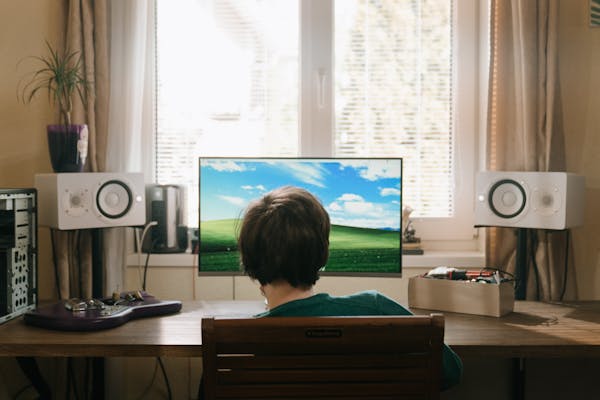In today's digitally driven world, children are growing up surrounded by screens. From smartphones and tablets to computers and TVs, screens play a significant role in their daily lives. While technology offers numerous benefits, excessive screen time can have adverse effects on children's physical health, mental well-being, and overall development. Thus, it's crucial for parents and caregivers to implement effective screen time management strategies to ensure a healthy balance between digital engagement and other activities. In this article, we'll explore various approaches to managing screen time for kids, promoting moderation, mindful usage, and positive screen habits.
Understanding Screen Time Guidelines
Before diving into strategies, it's essential to understand recommended screen time guidelines. The American Academy of Pediatrics (AAP) suggests the following:
1. For children under 18 months: Avoid the use of screen media other than video chatting.
2. For children aged 18-24 months: Introduce high-quality programming or apps, with adult supervision.
3. For children aged 2-5 years: Limit screen time to 1 hour per day of high-quality programming, watched with a caregiver.
4. For children aged 6 years and older: Establish consistent limits on screen time, ensuring it doesn't interfere with sleep, physical activity, or other healthy behaviors.
Setting Clear Boundaries
Establishing clear rules and boundaries around screen time is essential. Here are some tips for setting effective limits:
1. Create a Family Media Plan: Involve your children in creating a family media plan that outlines when and how screens can be used. Include rules for device-free zones and times, such as during meals and before bedtime.
2. Set Daily Time Limits: Determine the maximum amount of screen time allowed each day and stick to it. Use tools like parental controls or screen time management apps to enforce limits if necessary.
3. Encourage Breaks and Alternatives: Encourage regular breaks from screens and offer alternative activities such as outdoor play, reading, or creative pursuits.
Promoting Quality Over Quantity
Not all screen time is created equal. Focus on promoting high-quality content and interactive experiences:
1. Choose Educational Content: Opt for educational apps, games, and shows that promote learning and skill development.
2. Engage Together: Co-view or co-play with your child whenever possible. This not only enhances bonding but also allows you to monitor content and discuss what they're seeing.
3. Encourage Creativity: Encourage your child to use screens for creative pursuits such as drawing, music composition, or coding.
Being a Positive Role Model
Children learn by example, so it's essential to model healthy screen habits yourself:
1. Practice What You Preach: Set a good example by limiting your own screen time and being mindful of your digital habits.
2. Engage in Screen-Free Activities Together: Spend quality time engaging in screen-free activities as a family, such as board games, outdoor adventures, or cooking together.
3. Communicate Openly: Talk to your child about why it's important to balance screen time with other activities and involve them in decision-making regarding screen usage.
Monitoring and Supervision
While autonomy is crucial, children still need supervision and guidance when it comes to screen time:
1. Monitor Content: Keep an eye on the content your child is consuming and ensure it's age-appropriate and aligned with your family values.
2. Use Parental Controls: Take advantage of parental control features to restrict access to inappropriate content and set time limits on specific apps or devices.
3. Stay Informed: Stay informed about the latest trends in technology and digital media, so you can address any emerging concerns or challenges proactively.
Encouraging Balance and Flexibility
Finally, it's essential to find a balance between screen time and other activities while remaining flexible:
1. Adapt as Needed: Be flexible and willing to adjust screen time rules and limits based on your child's needs, developmental stage, and changing circumstances.
2. Encourage Variety: Encourage your child to engage in a variety of activities beyond screens, including physical activity, socializing with friends, and pursuing hobbies and interests.
3. Foster Open Communication: Keep the lines of communication open with your child and regularly discuss their screen time habits, concerns, and interests.
In conclusion, effective screen time management for kids requires a combination of clear boundaries, quality content, positive role modeling, supervision, and flexibility. By implementing these strategies and fostering a balanced approach to digital engagement, parents and caregivers can help children develop healthy screen habits that support their overall well-being and development in today's digital age.

